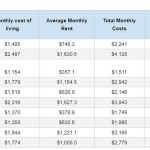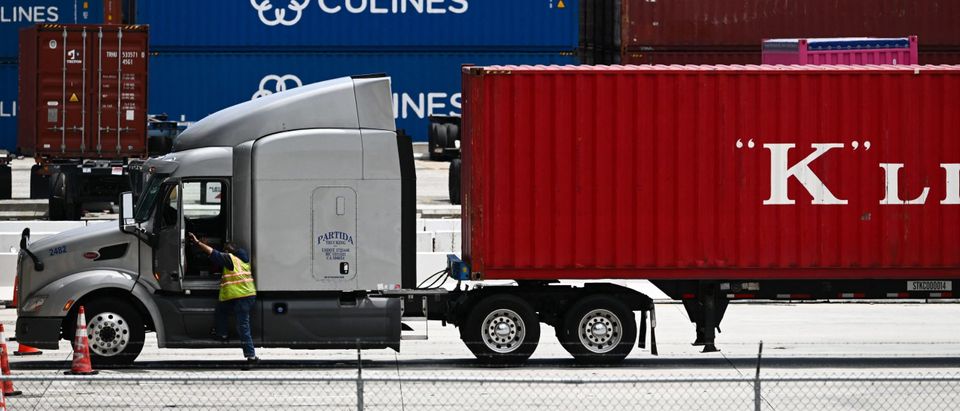By Michael Every of Rabobank
Oh Sugar!
A spoonful of sugar helps the medicine go down. However, sugar is now up over 40% year-to-date, and the monetary policy medicine is coming up with it. Sugar is usually a cheap ingredient in almost everything we eat or drink – and now it’s another example of supply-side shocks not going away. Olive oil is already echoing sugar, and what if the Black Sea Grain Deal fails too? Rates are going to go higher and stay higher.
-
The ECB’s Wunsch said rate hikes won’t stop until wage growth slows, and 4% is a possible ECB peak: that’s as the union responsible for distribution of sugar, olive oil, etc., at the biggest Dutch supermarket chain is on strike demanding a 14% raise and a lump sum. The ECB’s Schnabel said 50bps is not off the table for their next meeting.
-
In the US, the Fed is on blackout ahead of another hike in May, but a headline runs ‘Critics warn US Inflation Reduction Act could keep prices high’ due to a scramble for workers, and the Wall Street Journal says ‘Weapons Makers Can’t Hire Enough Workers as Ukraine War Drives Demand: Rising geopolitical tensions have boosted military spending, prompting an industrywide hiring spree’. Reported CEO quotes from quarterly earnings calls include: “You’re starting to see a true sort of reshoring sort of industrial manufacturing growth,” and, “I want to just mention the excitement we have around the onshoring of manufacturing. It’s strong, and it keeps pushing forward projects such as the semiconductor chip plants, data centres, EV facilities, both the assembly facilities as well as the battery plants that are in our backlog.”
-
In Australia, as Ben Picton notes in ‘Labour Pains’, the jobs market is extraordinarily tight too, and labour bargaining power may finally be increasing.
That does not imply an imminent sugary pivot, or even a saccharine pause as precursor. Or so the hedge funds diving into new US Treasury short positions think. Worse, this looks structural.
As the press notes a surge in global defence spending to new record –nominal– highs, Germany’s pledged EUR100bn hasn’t bought any bang so far, leaving the EU unable to defend itself out of a wet paper bag; Australia’s strategic defence review called its armed forces “not fit for purpose”, requiring massive investment and the development of domestic supply chains; Poland is spending 4% of GDP on defense without knowing where the money will come from; and the US hints it might need to double defence spending. Against this backdrop, Bloomberg underlines ‘What a New Cold War Means for Central Banks’:
“The battle against soaring prices is little more than a year old and central banks need to gird for the next big trial: Serving their nations in a world defined by protracted competition between the US and China. Policymakers will be reluctant cold war warriors – they are more comfortable aiming at inflation targets and tinkering with guidance on interest rates than fending off strategic adversaries. Unfortunately, they don’t have the luxury of sitting this out.”
As Lagarde said last week, and I said years ago, at least partial monetization of fiscal spending on defence and supply chains looms. This changes all your economic and market forecasts unless you are: (1) in denial; or (2) think geopolitical problems just ‘go away’.
On which, here’s where you might need a sugar hit to get through the Daily:
-
Tucker Carlson was canned from Fox News, Don Lemon at CNN, and Susan Rice at the White House. A member of the Fugees is on trial for being a Chinese agent; a prominent Chinese journalist faces inverse charges there. Note the zeitgeist – changes are sweeping in.
-
Russia’s Foreign Minister Lavrov told the UN Security Council that: “As was case in Cold War, we have reached the dangerous, possibly even more dangerous, threshold.”
-
China deleted the interview transcript of its Ambassador to France saying former-Soviet states have no legal status. However, as the South China Morning Post notes: “China’s questioning sovereignty of post-Soviet states is tit-for-tat over Taiwan: Beijing would not care about their international status if only the West would stop weaponizing the island against the mainland.” Yet the EU is now talking about sending its navies to sail in the Taiwan Strait.
-
The Financial Times has an op-ed, ‘How to stop a war between America and China’, noting in DC the talk is of a probable, not possible, conflict. Not long ago, many were denying there would be a Cold War: now that seems the best outcome, if the US can persuade China to enter into a period of 70’s-style détente. Unfortunately, the author concludes it is unlikely to happen, and the article doesn’t offer a realistic way to do what its title says.
-
In Foreign Policy, Adam Tooze argues ‘America Has Dictated Its Economic Peace Terms to China’, and concludes, “By refusing negotiation over China’s rise, the United States might be making conflict inevitable.” In short, the US is saying China can rise if it isn’t *this* kind of China; Yellen’s speech last week offered a new modus vivendi – the old trade order with geopolitical guardrails for national security in key sectors. However, the political dynamic on both sides may already be beyond that point due to a lack of trust.
-
If so, this isn’t going to be a short-term or a limited problem if so. It will impact all of us, everywhere, for years and years in different ways.
-
Tellingly, the US-China wargame recently held by the US Congressional Committee on the CCP saw Team ‘Blue’ kick China off of SWIFT; Team ‘Red’ said “No electronics for you’ in response. In short, global capital and trade flows collapsed.
This subject matter — war risk and global architecture collapse— is beyond the skillset or mindset of the average market participant, or so overwhelming that they simply don’t know what to do with it. I get that. Taleb-style, everyone is a fat, happy, well-fed Turkey until just before Christmas.
But should they really forecast in a geopolitical vacuum, with the above headlines flashing, the lessons of Ukraine just over a year old, rearmament underway, and central banks now shifting towards a quasi-war economy to fund it before any shooting starts outside Ukraine and Sudan?
Apparently it does. Almost all the market analysis you will read today is counting the same old beans, twiddling thumbs, or rearranging intellectual meme deckchairs on the Titanic. An industry which likes to pretend it can predict the future is looking the other way at key geopolitical risks which AT THE VERY LEAST point to much higher inflation FOR MUCH LONGER than is currently being priced for. Logically, there is no way rates are going to come down again quickly, and stay down, unless that new liquidity is of use against the big picture national security backdrop above.
Then again, the same markets can’t even grasp what’s going on in sugar. Which is why we are all deep in it.
Loading…












